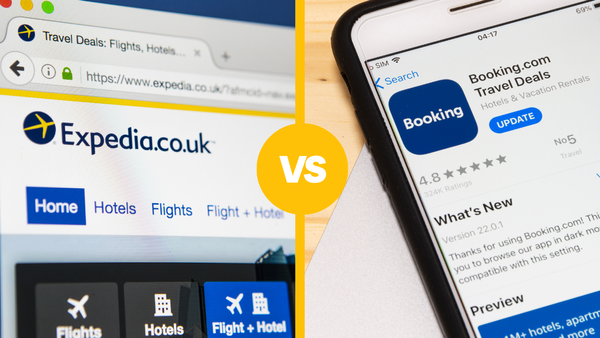The Best Solutions for Vacation Rental Payments Decoded

So your next potential guests have made the fantastic decision to book a stay at your vacation home, and all that’s left to do is complete the vacation rental payments section of the booking. Wouldn’t it be devastating if this process was too complicated or unsafe for your guests to finish their booking?
No matter how or where you decide to list your rental property, the payment process needs to be easy enough for your guests to successfully pay for their stay — without any hassles affecting the guest experience.
Read on to find out the criteria for the best methods of payment for the vacation rental industry.
What Makes for a Great Vacation Rental Payment Solution?
Like any part of the booking process, a host’s goal should always be to offer the best experience possible. And the payment process is no different.
Here are the main criteria for what determines a leading payment solution for hosts and guests:
-
Security
When money is at stake — especially yours and your guests’ — a safe payment process should be the number one priority. If guests do not trust the channel to allow them to pay securely, they will not want to use it.
This is especially true if you only accept online payments — as most hosts and property managers do. With the rise in fraud around electronic payments, knowledgeable travelers know that they need to be extra careful about sharing confidential information online. Because of this, they need a payment platform that guarantees the security of their bank account number and personal details.
-
Easy to use
A leading payment solution will ask for the most necessary details and nothing more. This way, the process is kept simple. It will also be easily laid out, step-by-step so that guests do not miss filling in something important.
If a host or property manager keeps noticing that travelers are getting stuck at the same place on a platform, something should be done to make paying easier.
-
Low costs
Running a vacation rental business can become costly. So it’s necessary to save on fees and expenses where possible. When choosing the ideal payment solution, the costs of using it need to play a role too.
While it is not the best idea to just go for the cheapest method, you should still make sure that the costs do not outweigh the benefits, nor should it break the bank.
-
Online
The vacation rental industry has fully embraced the digital age. And with it comes a shift to online payments and electronic transfers. The leading payment solutions for vacation rentals are primarily done online, for the sake of convenience and efficiency.
Best Vacation Rental Payment Methods
There are many different payment options available. But not all of them offer the security needed to keep payment processing safe, nor have the ease of use needed by hosts, property managers, and guests.
The following payment solutions are currently ahead of the pack:
1. Credit Cards
Using credit cards is one of the most convenient and straightforward methods of payment. It is also one of the safest electronic payment options because of its robust anti-fraud measures.

Making use of this solution does attract card processing fees, usually around 2-3% of the total paid. While this may seem pricey at first, knowing that this will most likely be the go-to payment solution for travelers makes it worthwhile.
2. Debit Cards
Seen as the more convenient alternative to cash, debit cards allow travelers to make transfers straight from their accounts to yours.
The major issue with a debit card transaction is that it does not have the same safety measures as credit cards. It is known to be more susceptible to scams. If you opt for including this payment solution, be sure to include extra security measures, like keeping your bank details off public websites and only sending them via secure channels.
3. Secured Online Transfers
A secured online transaction offers slightly more security than a debit card transaction. Third-party payment solutions, like VacationRentPayment or Stripe, offer a service whereby funds can be transferred using their software. Software solutions like these can easily be integrated into your browser.
These services provide extra security measures to make sure each payment can be made securely and all banking details are kept safe. They have enhanced cyber-security in place, like encryption and fraud monitoring, along with the proper certifications and registrations to protect against hackers and data leaks.
What’s more, using vacation rental software tools can help connect to secured online payment solutions. They can also help to streamline the payment process for guests and keep track of payment volume and data for hosts. iGMS vacation rental software offers hosts and property managers an all-in-one vacation rental management platform that enables you to:
- Connect your Stripe account to the iGMS platform to receive payouts and create invoices
- Manage multiple accounts, listings, and revenue streams across the top booking platforms from a single interface
- Synchronize reservations across multiple platforms to eliminate the risk of getting a double-booking
- Automate triggered messaging and organize your chats into a single feed via a unified inbox to ensure prompt replies
- Share daily cleaning schedules with your cleaning service, pay your cleaning fee, and auto-assign cleaning tasks
- Create essential reports on your performance and results within minutes
- Automate guest review send-outs
- Manage direct bookings using a direct booking management toolkit
- Take advantage of smart pricing adjustments through integrations with PriceLabs, DPGO, and Wheelhouse.
Vacation Rental Payment Methods to Avoid
Now that we have looked at the best methods for accepting payments, let’s take a closer look at the most inefficient or unsafe methods, and why it may be a bad idea to use them.
1. Cash payments
While cash used to be king, nowadays, it’s somewhat quite impractical. The biggest challenge is getting the money from the hands of guests to the hands of property owners in a decent time frame.
It is also inefficient for the payment volume that vacation rental owners and managers experience. If an owner is receiving hundreds of bookings at a time, physical bills, with no name attached to them, will be harder to keep track of than traceable electronic payments.
So, unless you know your guest personally or live close by, paying by cash is largely impractical. Especially when paying via debit cards or via online software services are so much quicker and easier.
2. Checks
While this method of payment still has its merits, credit and debit cards, and online payment services, have pushed cashing checks out of the running as a convenient form of payment.
Traditional checks are unreliable because there is a risk that the check would bounce, and hosts could lose out on their revenue. Banks could also charge higher processing fees for the extra admin work that checks create.

The upside, however, is that technological advancements have given rise to electronic checks. These e-checks not only make sure that the travelers have enough funds in their account first, but it also processes the payment within 24-48 hours.
3. Unsecure online transfers
For every safe online payment service, there are at least 5 risky ones. Risky financial services may offer their payment platform at lower fees than their competitors. However, they do not have the necessary security measures in place to keep the process secure. Because of this, the software could be vulnerable to hacking and fraud. It’s best to always use payment services that are well known in the industry and have the ability to process each payment securely.
How To Accept Payments via OTAs
Each OTA you decide to use for listing your vacation rental will have its own payment system. However, the great thing about using third-party OTA sites is that you can rest assured that the payment process is simple and secure.
Here’s how the leading OTAs accept payment for vacation reservations:
-
Airbnb
Airbnb offers many different methods for travelers to pay for their stay so that each guest can choose the channel they most prefer. The options usually differ per country or region too.
The most popular payment options according to Airbnb are via ACH/direct deposit, international wire transfers, debit and credit cards, Payoneer Bank transfer, PayPal, and Western Union transfers.
Guests will fill in their payment details when they are making their reservations on the Airbnb website. When the reservation is accepted, the payment will be processed. Airbnb will then hold on to the amount until 24 hours after check-in, before transferring it to the host.
-
Vrbo
Vrbo boasts its own unique system for payments. This system lets travelers pay via major credit cards such as Visa, Mastercard, and American Express.
Once a guest completes an online booking, rental owners will receive and accept the booking. Then, hosts will send a payment request for the guest to fulfill.
Hosts are able to decide what percentage of the booking total should be paid to confirm the booking, with the rest being due before the traveler’s check-in. Some hosts opt for a small initial amount of 10-20% of the booking total, while other hosts prefer to ask for the full booking amount upfront.
Property owners can then receive their payouts in their chosen local currency once they have filled in their relevant details on the platform.
-
Booking.com
Booking.com, like Airbnb, offers a range of payment solutions to choose from, which also vary by location.
The platform offers a choice of both online payments through their site, or hosts can facilitate payments directly with their guests. In the case where hosts choose to arrange payment directly, they have free reign to choose any method they prefer.
How To Set Up Payment Solutions On Your Website

If you manage bookings directly through your own website, it’s a smart decision for your business to add an online payment option. Here’s how to do so depending on the type of website you have:
-
WordPress
If you have a website with WordPress, all you need to do to enable online transactions is to install a booking widget plugin on your site. While there are many to choose from, you can find helpful lists ranking some of the leading ones.
-
Other Sites (Squarespace, Wix, Weebly, Shopify, etc.)
Other popular website builders may either need a booking widget plugin to be installed, or they may offer their own payment solution. The best way to find out more information about how your website provider enables payments is to enquire with its customer service team. Luckily, with many online businesses opening every day, most website builders will be able to accommodate an add-on to allow guests to pay. With the expertise of a Shopify migration company, vacation rental businesses can streamline their payment processes and provide a reliable payment solution for their guests.
Best Practices for Vacation Rental Payment Solutions
1. Offer more than one payment option
Offering more than one option for how to pay for their stay gives guests the ability to choose their preferred payment method. This enhances the guest experience because your guest won’t feel forced into a method they don’t like or are unable to use.
2. Offer the most popular payment system in your region
The most popular payment methods in your region will most likely be the solution that guests will prefer to use and trust.
Using a method that is most familiar to the majority of your guests will increase the odds that they already know how the system works. This means that they will have an easier time paying for their booking compared to being pushed to use an unknown platform.
3. Listen to feedback
At the end of the day, your guests will be the ones actually using the payment systems while making their booking. So, it’s important to listen when they provide any feedback.
If you see a particular method generates lots of errors or misunderstandings or requires additional assistance, hosts should act quickly to improve the payment process.
Every little step you take to enhance the guest experience will reward your vacation rental business in the long term through a good reputation, positive reviews, and loyal guests.






